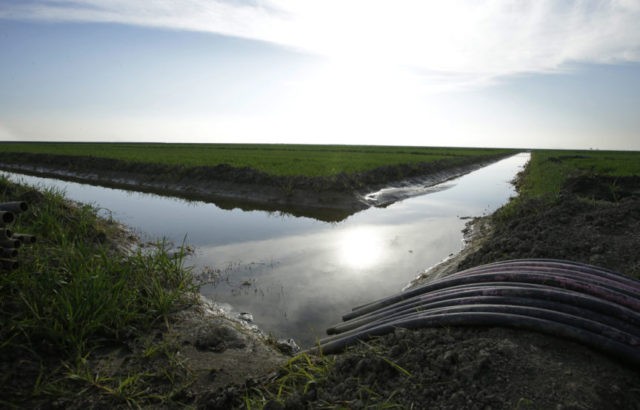SAN FRANCISCO (AP) — Federal wildlife officials say they’re set to issue the crucial first rulings on Gov. Jerry Brown’s decades-old ambitions to re-engineer California’s water system with the $16 billion construction of giant water tunnels from the Sacramento River.
The National Marine Fisheries Service and U.S. Fish and Wildlife Service say they’ll announce their findings later Monday on the environmental impacts of the proposed tunnels, which would be California’s biggest water project in decades.
Rulings on whether the project is permissible under federal laws protecting endangered species would be the first in a series of federal and state rulings expected in coming weeks and month that will determine the fate of the proposed twin 35-mile (55-kilometer) tunnels.
The project, expected to take more than a decade to complete, would suck part of the Sacramento into two four-story-high tunnels running below the river’s delta with the San Joaquin River, part of the West Coast’s largest estuary.
Supporters say the project would ensure a reliable water supply for cities, farms and tens of millions of residents, most of them in Southern and Central California.
Opponents say the project would speed the demise of some species of salmon and other native wildlife, already struggling after decades of heavy state reliance on water from the Delta.
In March, the two federal wildlife agencies issued draft versions of the rulings in favor of the project. That’s even though the fisheries and wildlife agencies acknowledged then that the tunnels would further harm California’s Delta smelt — a once abundant anchor species of fish, now nearly extinct — and winter-run Chinook salmon, another endangered native fish.
The project’s chances of federal approval may have received a boost from the election of President Donald Trump, who has said he backs big infrastructure projects and more water for Central California farmers.
Brown is the project’s most vocal backer, telling reporters earlier this month that the tunnels would allow the state to reduce its dependence on the giant mechanical pumps that now draw water from the Delta, for use by the 25 million Californians who get part or all of their water from the state’s giant north-south water projects.
Along with water withdrawals, which make the Delta warmer, narrower and shallower for fish, the pumps are one of the factors harming the estuary’s native fish.
“There’s so many dams and channels and bypasses — I don’t know if people are aware of how engineered our water system is,” Brown said, adding that the Delta already was no longer the wild habitat of “some mythical golden past.”
Brown has pushed variations of the project since his first term four decades ago, including a version in the 1980s that would have created canals instead of tunnels. Opponents argued that it would benefit Southern California at the expense of the North, and Californians defeated the proposal in a statewide vote.
It was Brown’s father, the late Gov. Pat Brown, who oversaw construction of the state’s complex and aging water system of aqueducts, dams, lifting stations and pumps.
Meanwhile, several regional public water agencies that would get water from the tunnels must also decide whether they will commit to paying for the project. Southern California’s giant Metropolitan Water District leads the push and is expected to decide by early fall.
Three officials involved in the project have told The Associated Press that the politically powerful water districts are now demanding to have a bigger direct role in financing, designing and construction of the tunnels, instead of the state. Proponents say that would speed construction of the tunnels.
Opponents fear the shift could lead water districts to cut corners on safety and environmental measures, as well as compel water districts to extract and sell more water at a higher rate to pay off the huge bills for the tunnels.

COMMENTS
Please let us know if you're having issues with commenting.